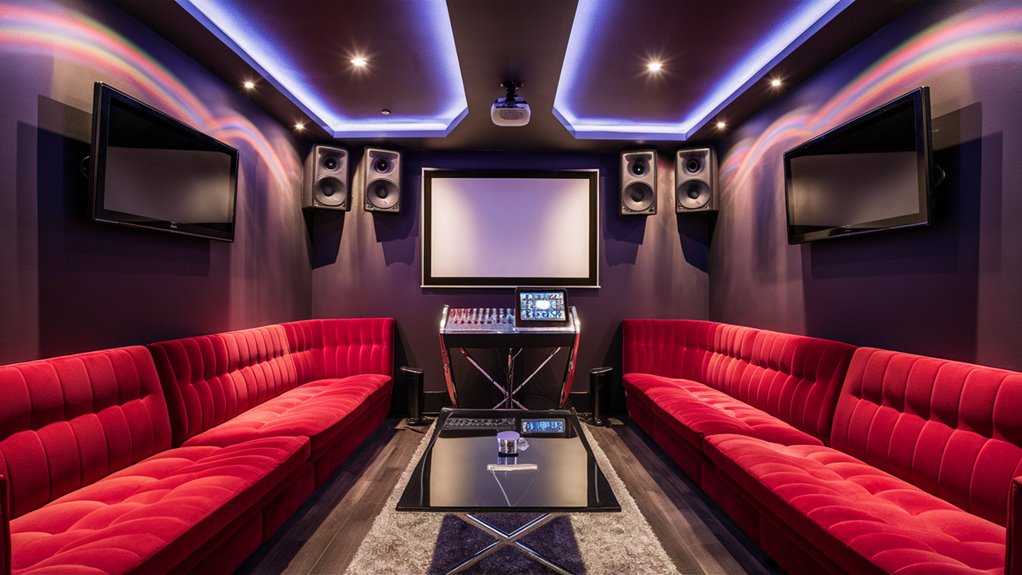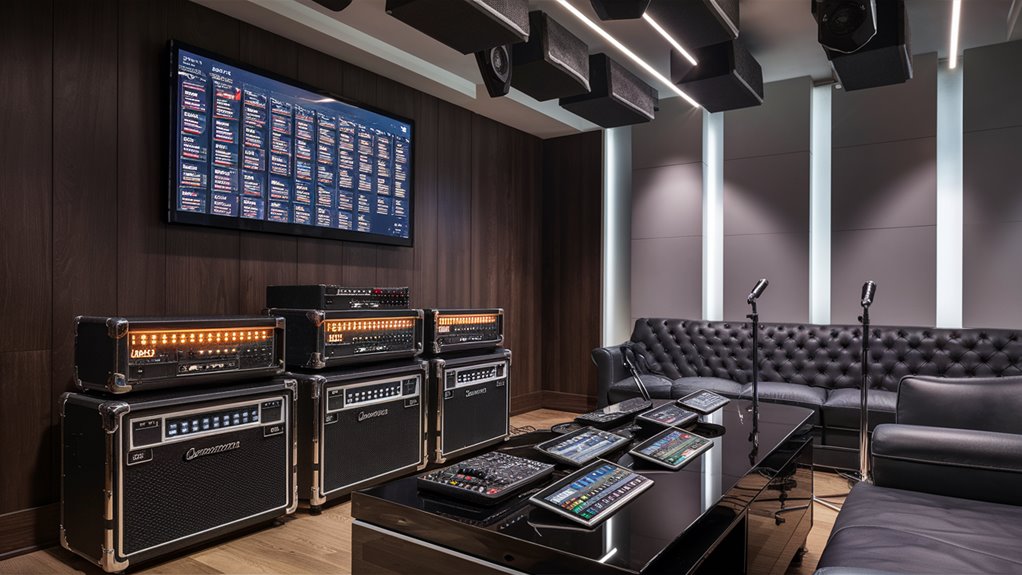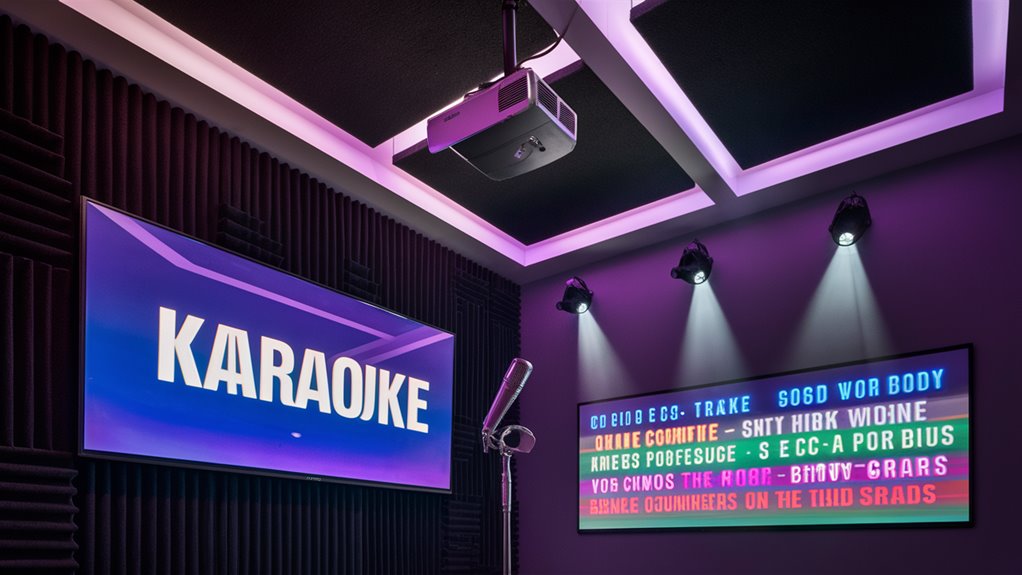
All You Need for a Top Karaoke Room

Main Sound Parts
A top notch karaoke setup kicks off with a strong 200W+ amp system paired with well-placed speakers for the best sound spread. Top mic like the known Shure SM58 gives clear voice sound and lasts long for many uses.
Screen and Images Tech
Set up a 65-inch 4K screen for sharp, easy-to-read lyrics. The high quality ensures visibility from any spot in the room, enhancing the sing-along experience. 호치민 황제투어
Room Sound and Air
Sound setup covering 30% of the walls maintains optimal sound with a 0.8-second echo. Keep the air cool between 68-72°F to preserve the equipment and keep singers comfortable for long performances.
Digital Song Setup
Build a central song list with:
- Various file types
- Frequent song additions
- Easy list mixing
- Efficient song requests
- Comprehensive style list
Whole Tech Sync
Link all components with a one control system for:
- Automated sound settings
- Coordinated screen performance
- Remote checking
- Equipment usage tracking
- Scheduled maintenance
Sound System and Room Setup
Great Sound System and Room Setup Guide
Main Sound Pieces
The start of a great karaoke room is a big amp with at least 200 watts for each side.
Wall speakers set just right at 45-degree spots spread sound well.
Two 12-inch subwoofers provide strong yet balanced bass for singing.
Best Mic Setup
Strong mics with cardioid pickup are best for karaoke, with at least two mics needed for duets and groups.
A pro mix board lets you adjust EQ and add effects like echo.
Right XLR cables set in safe paths prevent mix-ups and ensure clear sound.
Better Room Sound
Smart sound panels cover 30% of walls to enhance sound.
Bass catchers and mid sound soaks positioned in corners fix the 0.8-second echo.
This sharpens voices while maintaining a lively atmosphere.
Sound Gear Needs
- Amp Power: 200W+ for each side
- Speaker Set: On walls at 45° angles
- Subwoofers: Two 12-inch
- Mic Type: Strong dynamic with cardioid shape
- Cable Musts: Right XLR
- Room Sound Fix: 30% wall cover
- Echo Aim: 0.8 seconds
Choose and Care for Mics
Top Mic Choice and Care for Karaoke Gear
Needed Mic Gear
Strong dynamic mics are core to any good karaoke setup.
The Shure SM58 and Sennheiser e835 are top picks, known for blocking unwanted noise and lasting long.
Each mic needs its own wireless system to prevent sound mix-ups and maintain clear voices.
Keep Mics Good
Right mic care extends gear lifespan.
A UV clean system ensures mic safety between uses, with quick clean options available for immediate use.
Neat cable setup prevents cord issues, while regular check-ups detect any minor wear before they cause problems.
Smart Setup and Backups
Extra gear like additional mics and spare batteries ensures continuity.
Smart mic placements with fixed stands reduce cord clutter.
Set mic gain and save mixer levels for different voice types to maintain sound balance.
Stay vigilant with signal checks and strength monitoring to ensure consistent wireless performance.
Screen and Video Gear
Top Display and Video Setup for Karaoke Rooms

Main Screen Needs
A strong LED or OLED with at least 65-inch view and 4K detail is essential for a great karaoke room.
Position it 4-5 feet up for optimal viewing for all.
HDMI 2.0 or higher is required for the best image rate and HDR.
Show Monitor Setup
Adding a second 27-inch monitor improves lyric visibility for singers.
This dedicated singer screen should be at eye level for the best view.
Using a dedicated graphics card minimizes delay and ensures smooth performances.
Video Work and Signal Care
Pro karaoke requires robust video work tools:
- Professional video adjuster for multiple types
- Rapid text display
- Multiple input management
- HDCP 2.2 ready A/V receiver
- Power setup for stable voltage
Room Style and Feel
Top Karaoke Room Style Guide
Room Make and Sound
Pro karaoke rooms need smart design for best sound and user comfort.
Install high-end sound panels on walls and quiet floors to minimize noise between areas.
Arrange seating in a U-shape around the main screen for the best view for everyone.
Air Fix and Coziness
Air systems must maintain the optimal 68-72°F and humidity at 40-60% to protect equipment and facilitate singing.
Large air systems should support prolonged use and many people, keeping air fresh through extensive performances.
Lights and Space Needs
Use adjustable lighting systems to create entertaining atmospheres while maintaining visibility.
The room size should provide at least 100-150 square feet for 6-8 people, with ceilings at least 8 feet high.
Include a performance area with safe flooring and integrated gear spaces.
Tech Specs
- Soundproofing: Professional-level sound treatment
- Room size: Minimum 100-150 sq ft
- Ceiling height: 8+ feet
- Temperature range: 68-72°F
- Humidity control: 40-60%
- Lights: Adjustable LED system
- Flooring: Quiet materials
- Storage: Built-in gear spaces
Digital Song List Care
Digital Song List Care for Karaoke Gear
List Make and Build
A central list setup is crucial for smooth karaoke operation.
Implement complete tagging with:
- Singer information
- Style categories
- Language options
- Year of release
Search Help and User Experience
Search systems facilitate user experience with:
- Bi-lingual search capabilities
- Advanced indexing
- Support for various file types (MP3+G, CDG, MP4)
- Automatic backup strategies
Content Handling and Regulations
Professional karaoke management demands:
- Frequent song updates
- Smart song rotation in venues
- Preventing duplicates
- Proper content usage
- Collaborating with content providers
Tech Base
Cloud-based setups enable scalability while maintaining:
- Local backups
- Optimal performance
- Room connectivity Karaoke Night Safety: Precautions Everyone Should Follow
- Compatibility with all formats
Best List Care Tips
Establish maintenance routines:
- Regularly review content
- Monitor licensing requirements
- Optimize the playlist
- Track performance
- Verify backups





